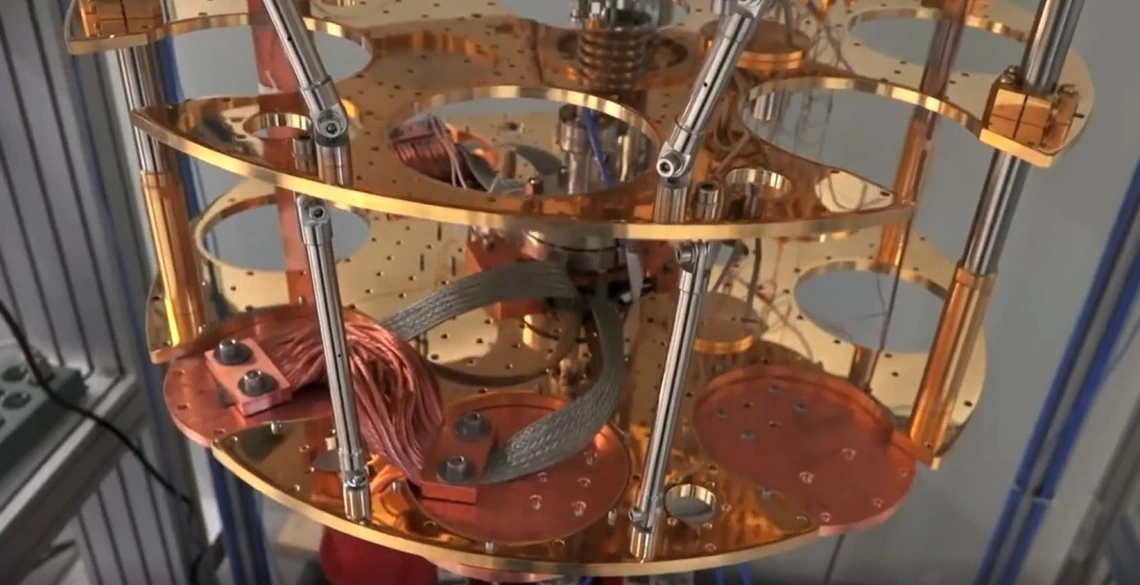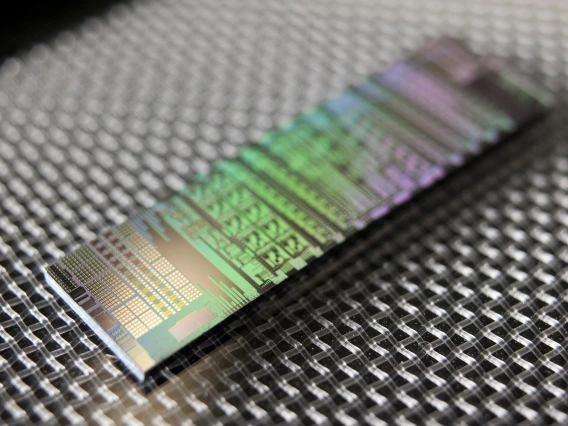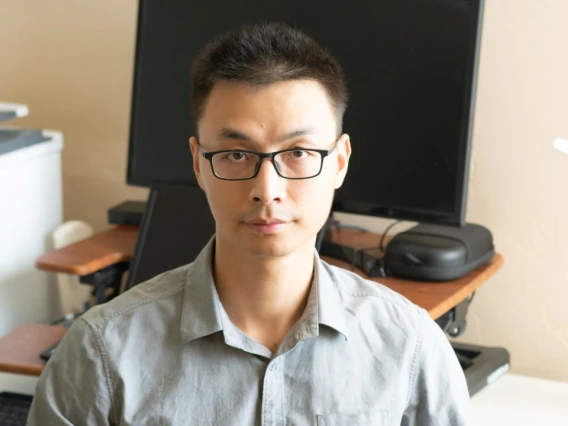UArizona Collaborates on $115M Effort to Build Quantum Computer
Three College of Engineering researchers are involved in the Superconducting Quantum Materials and Systems Center, which is part of a $625 million federal program to foster quantum innovation in the United States.

A superconducting quantum device (Photo: Fermilab).
Three University of Arizona engineers are part of the newly established $115 million Superconducting Quantum Materials and Systems Center, led by the U.S. Department of Energy's Fermilab. The center aims to build a quantum computer and develop quantum sensors that could lead to discoveries about dark matter and other elusive subatomic particles.
"The SQMS Center will combine the theoretical and experimental expertise of individual research groups to advance long-term success of quantum technologies," said Bane Vasić, professor of electrical and computer engineering and mathematics and a member of the university's BIO5 Institute.
The Superconducting Quantum Materials and Systems Center is part of a $625 million federal program to foster quantum innovation in the United States. Total planned Department of Energy funding for the center is $115 million over five years, with $15 million in fiscal year 2020 and future funding contingent on congressional appropriations. Center partners are contributing an additional $8 million in matching funds over five years.
The center includes 20 partner institutions worldwide across academia, government and industry, and more than 80 experts in fields such as superconducting technologies, atomic physics and quantum information science. University of Arizona researchers are working on quantum error correction and quantum sensor networks.
Vasić, a pioneer in classical error correction and fault-tolerant decoders, is adapting his algorithms to ensure information processed in a quantum computer remains intact.
"It has been widely recognized that not only quantum computers but communications systems and networks fundamentally hinge upon quantum error correction, or QEC," said Vasić. "Designing good QEC codes and decoders is arguably the most important theoretical challenge facing scalable practical realizations of quantum-enabled information processing systems."
Zheshen Zhang, assistant professor of materials science and engineering and optical sciences, and Quntao Zhuang, assistant professor of electrical and computer engineering and optical sciences, are focused on increasing the precision of quantum sensing for applications including GPS systems, astronomy laboratories, biomedical imaging and fundamental physics.
"The University of Arizona has both theoretical and experimental expertise, and we have three very complementary roles for this sensing effort," Zhang said.
Power of Quantum for the Greater Good
Information in classical computers is stored in bits – units of information that exist as either 0 or 1. What makes quantum computing exponentially more powerful is that its information is stored in qubits, which can exist as 0 and 1 simultaneously. However, qubits are extremely fragile and prone to collapsing, or decoherence.
In fact, many of today's highest performing qubits maintain information for only milliseconds at a time. Researchers at the Superconducting Quantum Materials and Systems Center plan to design and fabricate qubits that maintain coherence thousands of times longer.
"Unless we address and overcome the issue of quantum system decoherence, we will not be able to build quantum computers that solve new complex and important problems. The same applies to quantum sensors with the range of sensitivity needed to address long-standing questions in many fields of science," said Anna Grassellino of Fermilab, the director of the Superconducting Quantum Materials and Systems Center. "Overcoming this crucial limitation would allow us to have a great impact in the life sciences, biology, medicine, national security and enable measurements of incomparable precision and sensitivity in basic science."
UArizona Team Spearheads Sensing Efforts
The university's contributions are critical to mitigating qubit decoherence and developing quantum sensing applications, including for the observation of dark matter and gravitational waves.
"Error correction in sensing is fundamentally different from in computing," Zhuang said. "We developed codes particularly for sensing to allow the sensing advantage from entanglement and other quantum effects to survive even when there's loss or environmental imperfections."
This announcement about the Superconducting Quantum Materials and Systems Center comes on the heels of news that the University of Arizona is leading a $26 million National Science Foundation Engineering Research Center called the Center for Quantum Networks. Vasić, Zhang and Zhuang are all involved in the Center for Quantum Networks, which is helping lay the foundation for a quantum internet.
"It's an exciting time in the College of Engineering, as teams of our researchers work on efforts to revolutionize the way we compute, communicate and sense," said David W. Hahn, Craig M. Berge Dean of the College of Engineering. "SQMS is focused on addressing some of the most fundamental barriers to quantum computing, and I know the expertise of Bane, Zheshen and Quntao will prove invaluable."
The centers are also dedicated to inspiring and training students. In tandem with the research being done at the Center for Quantum Networks and the Superconducting Quantum Materials and Systems Center, the university is developing a graduate program in quantum information science and engineering.
"Quantum computing is going to completely transform our current technology and become a driver for the economy," Zhang said. "We expect the centers will play a major role in changing the next generation of our workforce."
In addition to the University of Arizona, Superconducting Quantum Materials and Systems Center institutions include the Department of Energy Ames Laboratory, Colorado School of Mines, Fermi National Accelerator Laboratory, Goldman Sachs, the Illinois Institute of Technology, the Italian National Institute for Nuclear Physics, Janis Research, Johns Hopkins University, Lockheed Martin, the NASA Ames Research Center, the National Institute of Standards and Technology, Northwestern University, Rigetti Computing, Stanford University, Temple University, Unitary Fund, the University of Colorado Boulder, the University of Illinois at Urbana Champaign and the University of Padova, Italy.
For more information on SQMS, see Fermilab's announcement.





